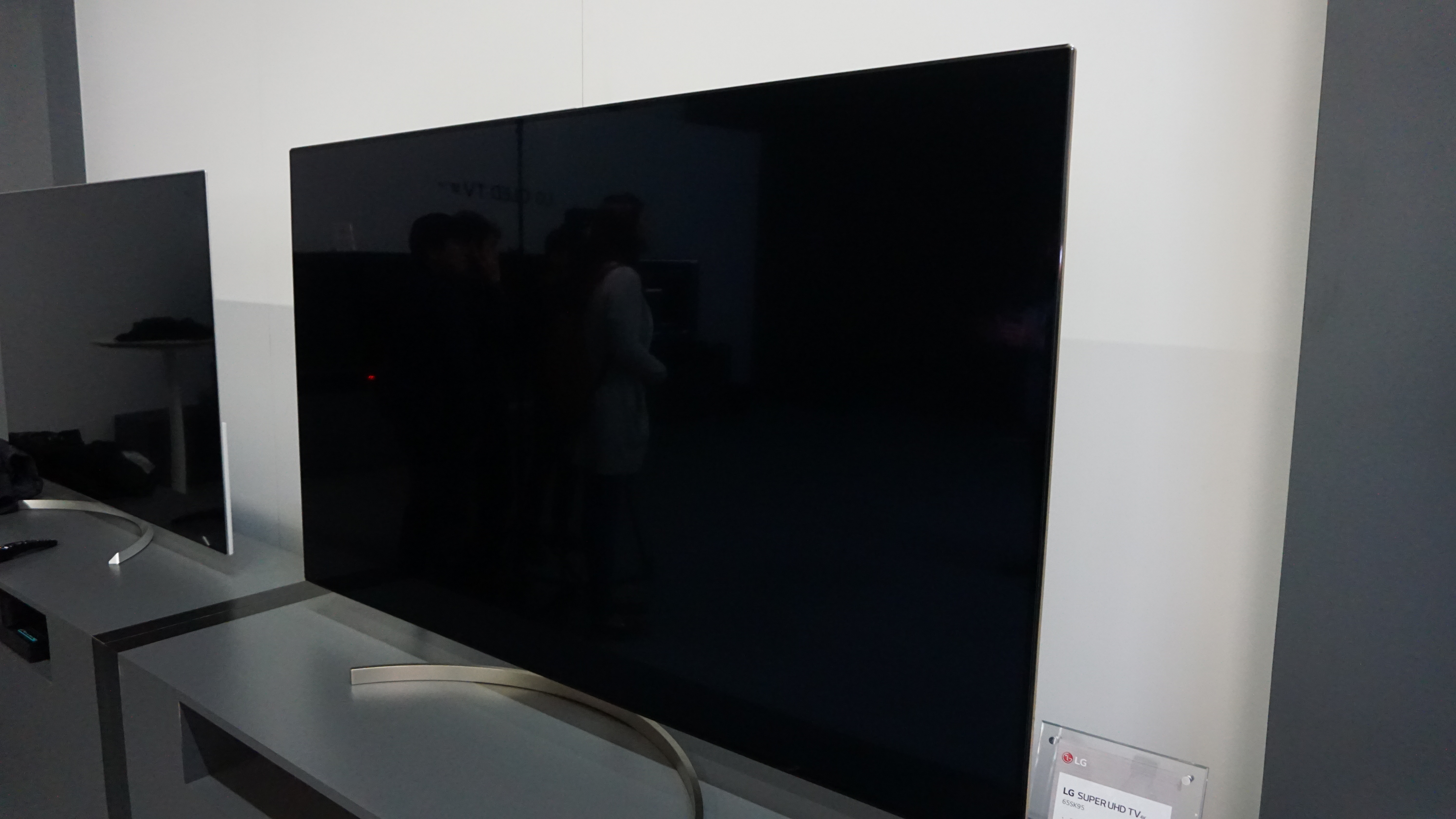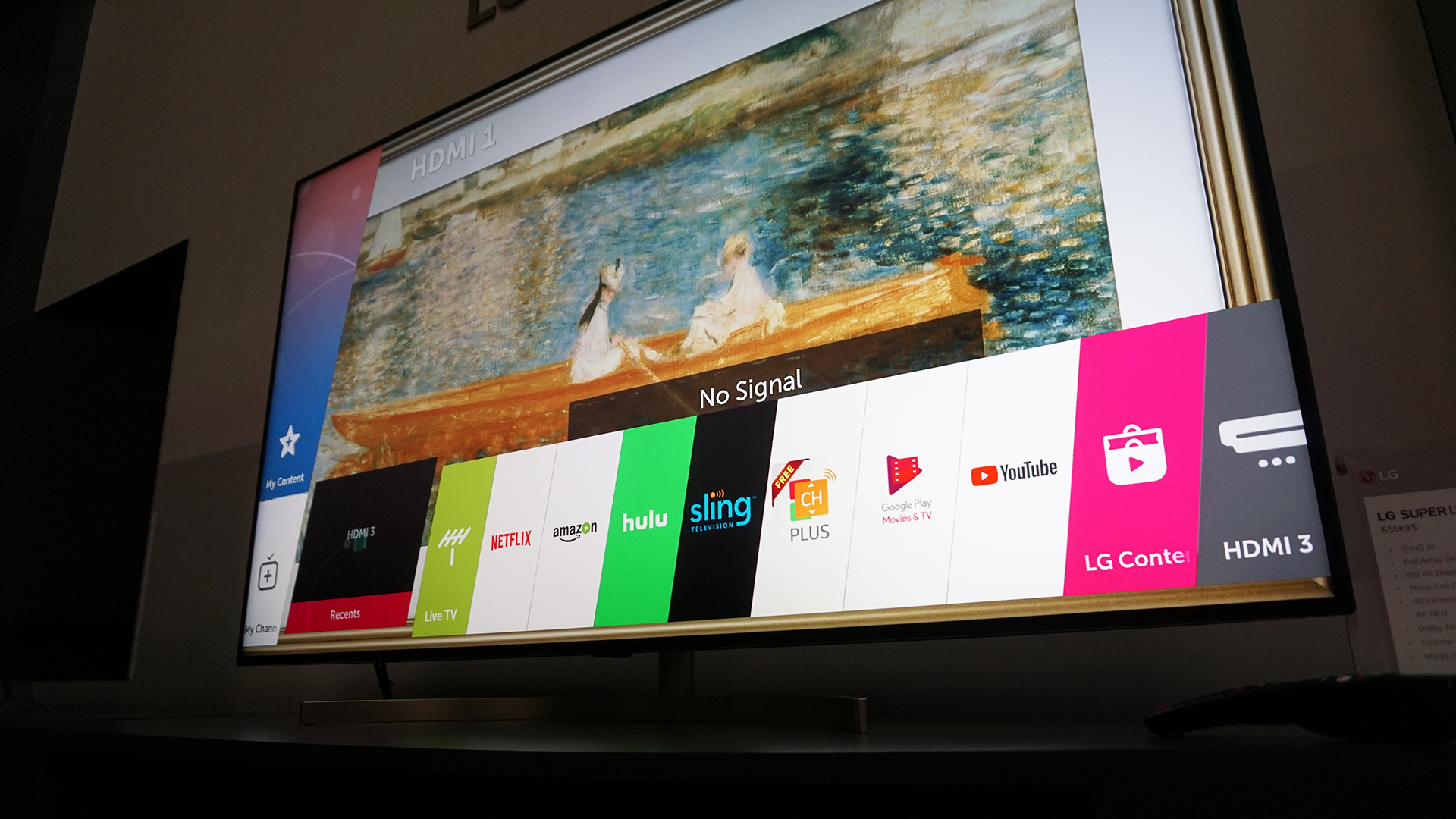LG SK9500 Series (65SK9500)
With an OLED line-up as strong as LG’s is, it can be easy to completely overlook the company’s Super UHD TVs. Sure, they’ve always offered a souped up version of LED technology with LG’s proprietary version of quantum dot which it calls Nano Cell but, when you could buy an OLED screen for about the same price – and sometimes a bit less – well, Super UHD doesn’t feel so super.
But that’s changing in 2018.
The top of LG’s Super UHD line-up is the SK9500. It will boast full-array local dimming and LG’s Alpha 7 processor, the same one found in last year’s high-end OLED screens, plus more local dimming zones and a 20% overall increase in brightness.
On top of all that, you’ll find the new and improved webOS with AI that connects with Amazon’s Alexa and Google Assistant, plus support Dolby Atmos, Dolby Vision and the still-nascent Advanced HDR by Technicolor.
It’s a dream package and, for the first time, might be just enough for Super UHD to give its rival OLED brethren a run for their money.

Design
While LG’s Super UHD screens are no match for the company’s ridiculously thin W8 OLED, they’re still pretty darn nice-looking.
On the SK9500, the TV’s stand takes the form of a crescent-shaped arch and the bezel is about as slim as we’ve slim. There’s still a little room to be shaved off in the back, but considering that this year’s high-end models – the SK9500 and SK9000 – are FALD, it’s about as slim as a package we’re like to see.
We’ll discuss the full-array local dimming screen more in a minute, but it’s worth defining here for the folks who’ve never experienced the luxury of a FALD screen in the past.
Essentially, instead of LED bulbs lining the edges of the chassis and lighting the whole screen, full-array local dimming screens have sections of LEDs that can be turned on and off individually. Clearly, this isn’t as good as OLED technology that allows each individual pixel to be turned on and off, but it a much cleaner picture than standard edge-lit TVs.
The only major weakness here in terms of design is that, in the US, the SK9500 is only available in a single size – a rather bulky 65-inches. If you’re looking for a screen to squeeze in a smaller cubby in your home entertainment center or to potentially place in a medium-sized or smaller bedroom, this likely won’t be the screen for you. (In the UK, you’ll have access to both a 55- and a 65-inch option and we’ve yet to hear what will make its way to Australia.)

Smart TV (webOS with AI)
This year, the big change for webOS is the addition of LG’s ThinQ platform: You’re basically getting a smart assistant within every TV similar to Amazon’s Alexa, Apple’s Siri or Google Assistant, but without the eerie disembodied voice.
ThinQ can connect with a number of smart devices on its own, plus can be integrated with either Google Assistant or the Amazon Alexa platforms.
While smart home integration is definitely the marquee application for webOS with AI, it’s not the only thing the new system can do: webOS with AI can also parse complex commands (like “Turn the TV off after this program is over”) and can intelligently optimize picture and audio settings based on the currently selected input (it will switch to game mode when you ask it to switch inputs to your PS4, for example).
There’s even some neat integrations for cable subscribers that allow you to search for start times of your favorite shows, or find alternative locations for them on your connected streaming services like Netflix or Amazon.
All that said, from the sounds of it, LG’s 2018 TVs won’t be as easy to set up as Samsung’s models are, but LG representatives told us that the process shouldn’t be overly complex and mentioned that the TVs will offer users a dedicated user guide that comes built right into the OS that will teach you how to use the new commands.

Performance
So the design is nice and the OS has been upgraded to match the new-found intelligence of your smart speaker. Great. None of that would matter if the TV’s picture performance didn’t improve in line with everything else. Thankfully, it did.
Namely, one of those changes is the 20% increase in overall brightness. That, in tandem with LG’s proprietary HDR10 Pro technology that up-converts static metadata to dynamic metadata in a similar fashion to HDR10+, should help the SK9500 produce some authentically beautiful images with HDR sources. (If you’re looking for more conventional HDR support, the LG SK9500 will support the HDR10, Dolby Vision and still-nascent Advanced HDR with Technicolor formats as well.)
The other change is that thanks to its anti-reflective coating, the TV will be better suited for brightly lit rooms and will have an improved effective viewing angle for the 60% of people who, according to LG’s data, don’t sit directly in front of their TV screen.
There’s also the matter of the FALD screen I’ve been going on so much about. With it, the SK9500 is able to produce more controlled images than ever before in the Super UHD line-up. That means you’ll see less halo-ing in fewer places than you have in the past and better overall contrast. This is especially noticeable if you place the SK9500 next to any edge-lit TV where you can see light banding, but even on its own the effect is profound.
Disappointingly, however, once you begin looking for halo-ing and light banding it can still be noticeable – yes, even here on LG’s Super UHD TVs. If you have an eye for these things and don’t mind shifting down to a smaller size for better performance, you should go with the LG C8 OLED, which offers a lot of the same features mentioned above but with a bulletproof OLED panel that has a spectacular contrast ratio and zero issues with banding or haloing.
To end on a high note, though, the Nano Cell technology LG imbues into each panel helps colors look astoundingly accurate and superbly vivid. During our demos, there was a lot of talk about the three times improvement made to Look Up Tables (LUTs) but instead of boring you with the details, it’ll suffice to say that not only will this year’s screen will be more accurate than last year’s models, but with less noise and higher color vibrancy, too.

Early verdict
While OLED might still reign supreme in the house of LG, the Super UHD Series is about as close as it’s ever been to claiming the top spot. The new FALD screen will make the screen brighter than it’s ever been with a better contrast ratio, all while reducing banding and halo-ing, while the addition of webOS with AI and the new Alpha 7 processor will make it a heck of a lot smarter than an LG TV has ever been.
We’re still not convinced the 65-inch SK9500 will be a better performer than this year’s LG C8 OLED – especially considering how close the two will be in price – but you can count on the Super UHD screen to be brighter and offer a better effective viewing angle, if nothing else.
The LG 65SK9500 will be available starting in late March for $2,499 (around £1,780 or AU$3,250). For reference, the 55OLEDC8 (referenced above) will also cost $2,499 (around £1,780 or AU$3,250).
- Like to comparison shop? Here's the entire LG TV 2018 line-up
0 comments:
Post a Comment